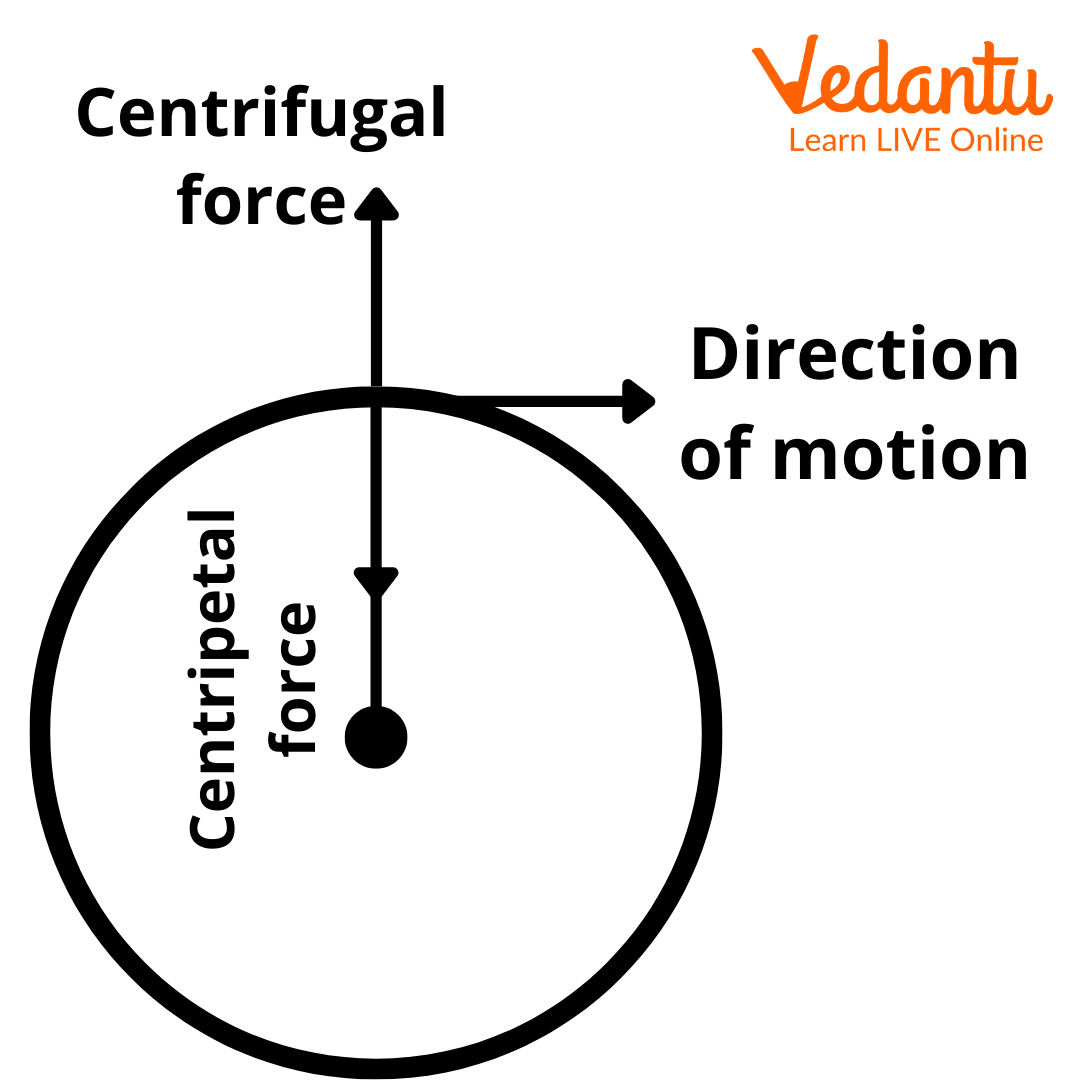




A Brief Idea about Centrifugal Force
Centrifugal force is a Latin term that means "centre fleeing." It isn't a force; it is caused by inertia. This force defines an object following a curved path's tendency to fly outward, away from the curve's centre. It also describes an object's tendency to resist any change in its state of rest or motion. Christian Huygens initially identified centrifugal force in 1659, explaining that it is not a "real" force because objects moving in a straight line continue to move in a straight line. This is known as inertia because it protects things from the force that causes them to move in a curve. This force also tends to spread outward.
What is Centrifugal Force?
An outward imaginary force experienced by an item travelling on a circular path directed away from the centre of rotation is called centrifugal force. Since it only appears to exist when there is a centripetal force, it is called a fake force. The inertial quality of the body travelling in a circular direction causes this force. The centripetal force, which acts towards the centre of a circular route, is identical in magnitude and dimensions to centrifugal force. The axis of rotation is parallel to the direction of centrifugal force, which is away from it. Centrifugal force is utilised in various rotating equipment, including centrifugal pumps, centrifuge rotors, and banked highways.

Centripetal and Centrifugal Force
Centrifugal Force Unit and Dimensional formula
Centrifugal Force Formula
The centrifugal force can be estimated using the formula if the velocity of the moving item is known. The centrifugal force is calculated using the formula below.
Where,
m= the moving body's mass
r= The moving body's distance from the centre
v= velocity of the moving body
The centrifugal force may be estimated using the following formula if the angular velocity of the moving item is known:
where,
r = the distance between the centre and the moving body
m= the moving body's mass
w = Angular Velocity
Centrifugal Force, Hypothetical or Real?
Centrifugal force is hypothetical or fictitious because, as we saw in the definition, centrifugal force appears to exist when a centripetal force is present. The movement of the passenger automobile and its wheel can help us grasp this better. The vehicle is driven by a centripetal force that acts on all car sections when a car with passengers spins the wheel. This leads the occupants to move towards the seat's edge and towards the door, causing the passengers' centripetal force to be transmitted. According to Newton's second law of motion, the centrifugal force, which is related to the acceleration force, is felt by passengers away from the car. Newton's law of action does not consider it a genuine passion.
Relative Centrifugal Force
The RCF stands for relative centrifugal force. The radial force generated by the spinning rotor, as represented close to the Earth's gravitational pull, per g force exerted on the particles, is relative centrifugal force. The exponential form of rotational speed is defined as minute revolutions. Centrifuges are chosen based on two factors: one, the centrifugal force grows with distance from the axis of rotation, and the other, doubling the rotational speed raises the centrifugal force fourfold.
Where,
r = Rotational Radius (cm.)
Centrifugal Force Examples
In this section, we will look at some examples of centrifugal force to get a better understanding of the concept.
1. Drifting
The magnitude of this force is related to the vehicle's speed. Tremendous pressure is applied to the road's edge when a car travels at high speeds. The driver feels a centrifugal force when manoeuvring a vehicle around a sharp curve, which throws the vehicle outwards. On the other hand, a slow-moving car receives less fast energy, which aids the centrifugal force in drifting the car.
2. A Stone Suspended on a Thread
A force is applied to the stone throughout this experiment that causes it to migrate away from the centre. The centrifugal force is the name given to this force. You can easily demonstrate centrifugal force in real life by connecting a stone to a thread and twirling it around.
3. A Centrifugal Pump
A centrifugal pump is an impeller system entirely submerged in water in hydraulics. The fluid that surrounds it circulates as well. As the water rotates, it is subjected to centrifugal force, which causes it to be flung outwards. As a result of the increased pressure and kinetic energy, less pressure develops at the centre. As a result, water drains quickly from the container.
4. Machine to Wash Clothes
Centrifugal force is used to operate the washing machine. The machine's rotating mechanism is responsible for pushing cloth, water, and dirt particles to the outside of the drum. The dirt is subsequently deposited in the pouch linked to the container inside. As a result, the clothing is properly cleaned.
5. Orbits of Planets
The planets that revolve around the Sun retain a rotational speed that does not revolve around the Sun. All celestial bodies revolving around the Sun endure a significant centrifugal force. As a result, centrifugal force is critical for planetary orbital stability.
Conclusion
Centrifugal force is also a type of pseudo force because it is seen that when an object moves in a circular motion, the centrifugal force stops. This allows the body's "feeling" of centrifugal force to vanish, causing the thing to travel tangentially to the path of motion. It also appears to affect a mass whose activity is specified in a non-inertial frame of reference. Apart from this, we can also see its use in our daily life, about which its usefulness has also been described through examples in this article.






FAQs on Centrifugal Force - JEE Important Topic
1. What's the distinction between centrifugal and centripetal forces?
Centrifugal and centripetal both are types of central force. In a circular motion, centrifugal force is a false force that acts along the radius and is directed away from the circle's centre. The force component applied to an object in curvilinear motion directed towards the axis of rotation or centre of curvature is known as centripetal force. Centrifugal force on a body moving in a circular path keeps it away from the centre while centripetal force will keep the body inside the circle.
2. In what ways does the centrifugal force come into play in everyday life? How does centrifugal force work in space?
While the bus travels in a circular pattern, or when we are on the bus, the bus comes to a stop or at a corner. This time, a force is acting on the bus, and a centrifugal force is operating on the passengers, pulling them from the centre to the outside. We've been relegated to the bus's outer reaches.
Technically, spinning has the same impact as gravity because it generates a force called the centrifugal force, similar to gravity. You can produce a force on the exterior walls that equal the force of gravity by modifying specific characteristics of a space station, such as the radius and rotation rate.
3. What is the importance of centrifugal force? How much weightage of marks does it hold for JEE?
Most of the time there are no direct questions about centrifugal force but questions based on the centrifugal force are asked in rotational dynamics. The concepts and formulas of centrifugal force are important for JEE as questions to find the radius of a circular path have been asked in previous exams. It's difficult to accurately give the weightage of this topic for the JEE Exam but you can expect about 2-3 questions. Thus it holds about 6-7% weightage of total marks in the JEE exam.



































